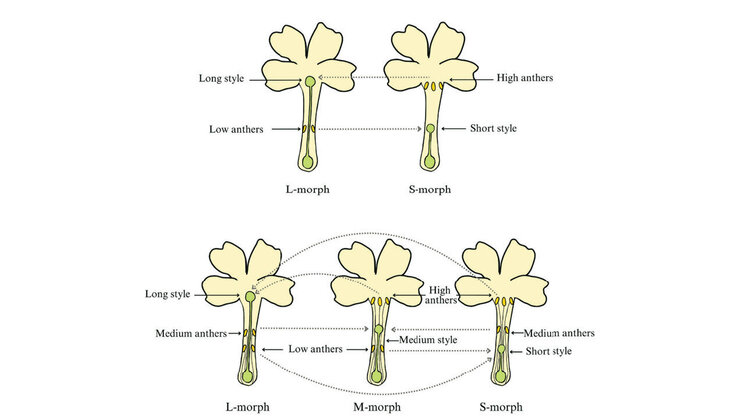-
Faculty of Arts and HumanitiesJakobi 2, r 116-121 51005 Tartu linn, Tartu linn, Tartumaa ESTJakobi 2 51005 Tartu linn, Tartu linn, Tartumaa ESTJakobi 2, IV korrus 51005 Tartu linn, Tartu linn, Tartumaa ESTJakobi 2, III korrus, ruumid 302-337 51005 Tartu linn, Tartu linn, Tartumaa ESTÜlikooli 16 51003 Tartu linn, Tartu linn, Tartumaa ESTLossi 3 51003 Tartu linn, Tartu linn, Tartumaa ESTÜlikooli 18 50090 Tartu linn, Tartu linn, Tartumaa ESTPosti 1 71004 Viljandi linn, Viljandimaa ESTJakobi 2 51005 Tartu linn, Tartu linn, Tartumaa ESTJakobi 2 51005 Tartu linn, Tartu linn, Tartumaa ESTFaculty of Social SciencesLossi 36 51003 Tartu linn, Tartu linn, Tartumaa ESTJakobi 5 51005 Tartu linn, Tartu linn, Tartumaa ESTLossi 36, ruum 301 51003 Tartu linn, Tartu linn, Tartumaa ESTNarva mnt 18 51009 Tartu linn, Tartu linn, Tartumaa ESTNäituse 2 50409 Tartu linn, Tartu linn, Tartumaa ESTNäituse 20 - 324 50409 Tartu linn, Tartu linn, Tartumaa ESTLossi 36 51003 Tartu linn, Tartu linn, Tartumaa ESTRaekoja plats 2 20307 Narva linn, Ida-Virumaa ESTRingi 35 80012 Pärnu linn, Pärnu linn, Pärnumaa ESTLossi 36 51003 Tartu linn, Tartu linn, Tartumaa ESTLossi 36 51003 Tartu linn, Tartu linn, Tartumaa ESTFaculty of MedicineRavila 19 50411 Tartu linn, Tartu linn, Tartumaa ESTBiomeedikum, Ravila 19 50411 Tartu linn, Tartu linn, Tartumaa ESTNooruse 1 50411 Tartu linn, Tartu linn, Tartumaa ESTL. Puusepa 1a 50406 Tartu linn, Tartu linn, Tartumaa ESTL. Puusepa 8 50406 Tartu linn, Tartu linn, Tartumaa ESTRavila 19 50411 Tartu linn, Tartu linn, Tartumaa ESTUjula 4 51008 Tartu linn, Tartu linn, Tartumaa ESTRavila 50411 Tartu linn, Tartu linn, Tartumaa ESTRavila 19 50411 Tartu linn, Tartu linn, Tartumaa ESTFaculty of Science and TechnologyVanemuise 46 - 208 51003 Tartu linn, Tartu linn, Tartumaa ESTNarva mnt 18 51009 Tartu linn, Tartu linn, Tartumaa ESTRiia 23b/2 51010 Tartu linn, Tartu linn, Tartumaa ESTRavila 14a 50411 Tartu linn, Tartu linn, Tartumaa ESTNarva mnt 18 51009 Tartu linn, Tartu linn, Tartumaa ESTRiia 23, 23b - 134 51010 Tartu linn, Tartu linn, Tartumaa ESTObservatooriumi 1 61602 Tõravere alevik, Nõo vald, Tartumaa ESTNooruse 1 50411 Tartu linn, Tartu linn, Tartumaa ESTJ. Liivi tn 2 50409 Tartu linn, Tartu linn, Tartumaa ESTVanemuise 46 51003 Tartu linn, Tartu linn, Tartumaa ESTVanemuise 46 51003 Tartu linn, Tartu linn, Tartumaa ESTArea of Academic SecretaryLossi 3 51003 Tartu linn, Tartu linn, Tartumaa ESTUppsala 6, Lossi 36 51003 Tartu linn, Tartu linn, Tartumaa ESTArea of Head of FinanceÜlikooli 17 51005 Tartu linn, Tartu linn, Tartumaa ESTArea of Director of AdministrationÜlikooli 18A (III korrus) 51005 Tartu linn, Tartu linn, Tartumaa ESTÜlikooli 18, ruumid 102, 104, 209, 210 50090 Tartu linn, Tartu linn, Tartumaa ESTArea of Vice Rector for DevelopmentNarva mnt 18 51009 Tartu linn, Tartu linn, Tartumaa ESTVanemuise 46 51003 Tartu linn, Tartu linn, Tartumaa ESTLossi 25 51003 Tartu linn, Tartu linn, Tartumaa ESTArea of RectorArea of Vice Rector for Academic AffairsUppsala 10 51003 Tartu linn, Tartu linn, Tartumaa ESTÜlikooli 18b 51005 Tartu linn, Tartu linn, Tartumaa ESTArea of Vice Rector for ResearchW. Struve 1 50091 Tartu linn, Tartu linn, Tartumaa EST
Doctoral defence: Ahto Agan “Interactions between invasive pathogens and resident mycobiome in the foliage of trees”
On 31 March at 10:15 Ahto Agan will defend his doctoral thesis “Interactions between invasive pathogens and resident mycobiome in the foliage of trees” for obtaining the degree of Doctor of Philosophy (in Botany and Mycology).
Supervisors:
Prof. Rein Drenkhan, Estonian University of Life Sciences
Prof. Leho Tedersoo, University of Tartu
Opponent:
Dr. Audrius Menkis, SLU Forest Damage Centre (Sweden)
Summary
Increasing global trade of plants and plant material and the ongoing climate change have accelerated the movement of alien fungal pathogens across continents. One of the most serious examples of which is ash dieback, caused by an invasive fungus Hymenoscyphus fraxineus. The pathogen originates from Far-East Asia and in its natural habitat it is a weak leaf pathogen on ash species. H. fraxineus is a close relative fungal species of European indigenous ash leaf decomposer H. albidus that is considered harmless to its host in Europe. H. albidus is relatively rare in European nature possibly due to outcompetition by H. fraxinues. In Europe H. fraxineus is a dangerous pathogen and only 5% of the trees have natural resistance against the pathogen. The results of this thesis showed that the propagule pressure of H. fraxineus is in its peak late in the growing season when natural defence mechanisms of the leaflets are low. This thesis found for the first time that H. albidus also possesses similar ability to cause necrotic lesions on ash leaflets in the end of growing season while the leaves are still attached to the tree. This thesis also found evidence of H. fraxineus on two herbarium specimens from exotic ash species Fraxinus chinensis and F. chinensis subsp. rhynchophylla collected in years 1992 and 1978 in Tallinn Botanic Garden. This is 14 years before the first damage of ashes in Poland/Lithuania and 19 years before the first finding of H. fraxineus from fungal herbaria documented in Estonia. Fungal forest pathogens also affect Scots pine (Pinus sylvestris). Two of the most important pine needle pathogens are Dothistroma septosporum and Lophodermium seditiosum. The results of this thesis showed that D. septosporum is most abundant in summer and that the spores of the pathogen already spread since spring. Spring is also the time when the prophylactic control of the fungus should start. Neither D. septosporum nor L. seditiosum had significant effect on fungal species richness of Scots pine needles. Sampling year was not an epidemic year for L. seditiosum, hence the low percentage of the pathogen on pine needles. The most significant driver of the fungal richness of Scots pine needles was surprisingly endophytic Lophodermium conigenum. The role of this fungus in pine needles requires further studies. In conclusion, the results of this dissertation show that different invasive pathogens should have a different strategy that also considers their specific biological traits in their monitoring and control.
Doctoral defence: Ahto Agan “Interactions between invasive pathogens and resident mycobiome in the foliage of trees”
Read more similar news






